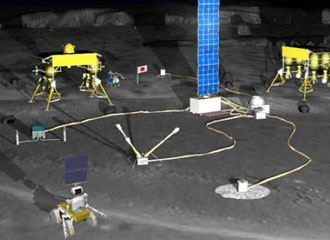Japan’s population growth rate peaked at about 2% back in 1969 and has been falling steadily ever since. It hit an ominous -0.0523% in 2008. Thanks to a birth rate of only 1.4 kids per woman and a virtually zero net immigration rate, Japan’s population will fall from its current 127 million to 100 million by 2050.
The big fear isn’t that Japan will evaporate as a nation. Long before that happens, it faces serious social and economic problems associated with a dwindling working-age population trying to support a retired population that will reach 30% by 2030. The situation is similar to that in the U.S. midwest. In Iowa so many young people have been leaving for more appealing work that employers are eager to hire any illegal immigrant who shows up at the door. These newcomers — for whom spending long days on a slaughterhouse floor seems like the opportunity of a lifetime — will make up 50% of Iowa’s 3 million projected population by 2030.
As an island nation Japan doesn’t have access to that kind of cheap, eager labor pool, nor would its national obsession with ethnic purity allow it to implement a backdoor policy except on the very limited basis currently in place for a few thousand Brazilians of Japanese ancestry and some others overstaying their tourists visas by six to ten months. Instead, it is boldly turning to its world-beating robotics industry for a permanent solution.
As of 2005 Japan employed about 40% of the world’s industrial robots. In 2007 the government’s tech policy called for a million factory robots by 2025. While that goal may have slipped a bit during the recent recession, there’s no doubt about the nation’s focus on robots as the ultimate solution to the problems of a shrinking labor force and a surging elderly population. By 2009 Japan had given $100 million in grants to firms like NEC, Toshiba, Fujitsu and Sanyo to develop personal robots designed for elderly care. That segment of the industry is expected to grow from $26 bil. in 2010 to $70 bil. by 2025.
That’s over twice the size of Japan’s auto industry.
Recently Japanese planners have been getting bolder about putting the nation’s future in the cold, capable hands of advanced robots. In April of 2010 JAXA, Japan’s space agency, released plans to invest $2.2 bil. to send 660-pound robots to survey the moon by 2015 as groundwork for building an unmanned colony near the moon’s South Pole by 2020. Both the construction of the colony and its staffing would be entirely robotic until more plans are laid for humans to join them as colonists.
It’s easy to smile at Japan’s approach to the future as an exotic solution to the problems of one peculiar nation. In reality Japan is simply being forced to cope early with problems that will be faced by the entire human race in the not-so-distant future.
The constant shouting over our illegal immigration problem makes it easy to believe that the U.S. will have access to an endless supply of willing workers into the distant future. That ignores the rapid social evolution that has already been seen in countries like Korea, Japan, France, Italy and the U.S. Fears of population explosions have faded into dim memories along with tie-dyes and bellbottoms.
It may take another decade or two for young adults south of the border to become so engrossed in their flatscreen TVs and cellphones to lose interest in procreation. But if East Asia, the U.S., Europe and Japan are not aberrations, that time will come sooner than we expect. We too will soon need non-human intervention to help feed, house, clean and diaper an exploding geriatric population. When that day arrives, it will be interesting to see whether Japan will be as dominant in robotics as it was with fuel-efficient cars back in the 1980s.

